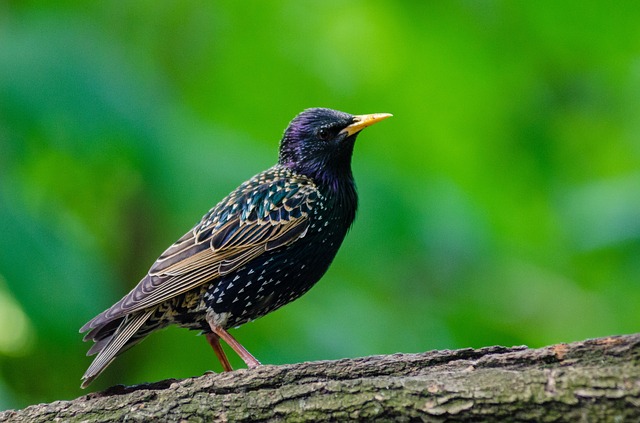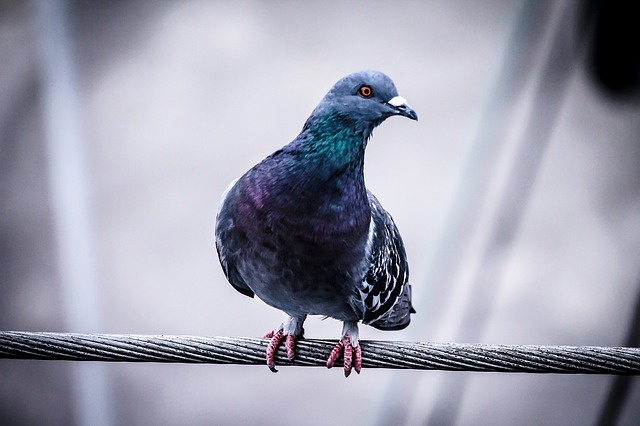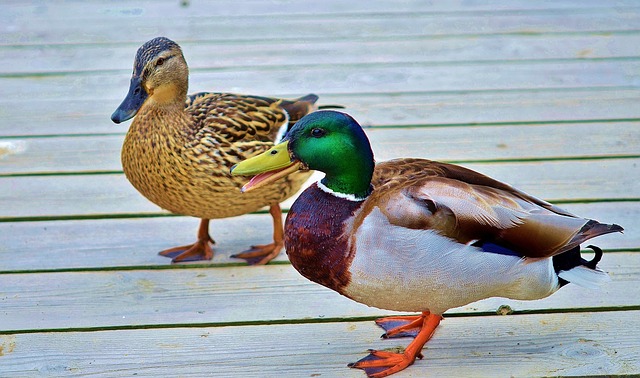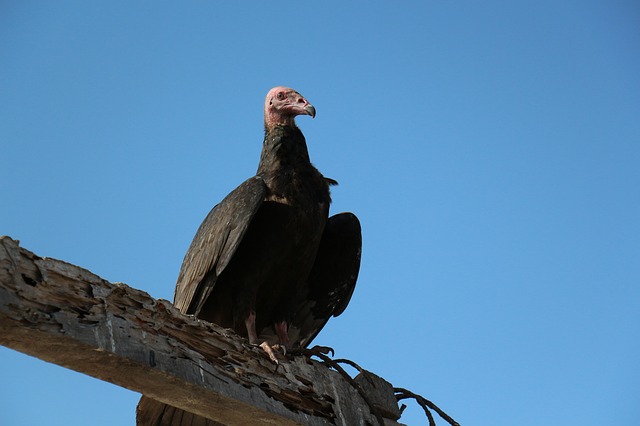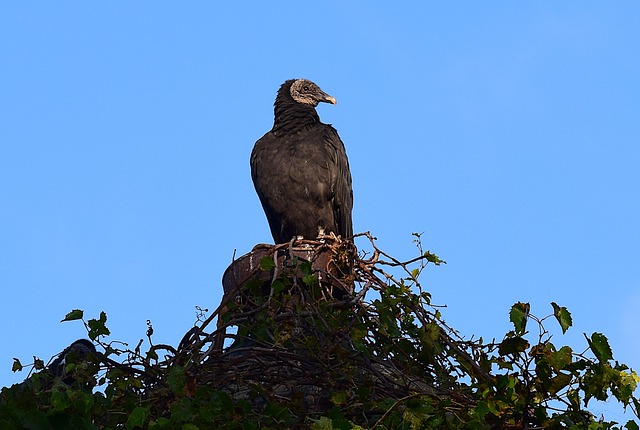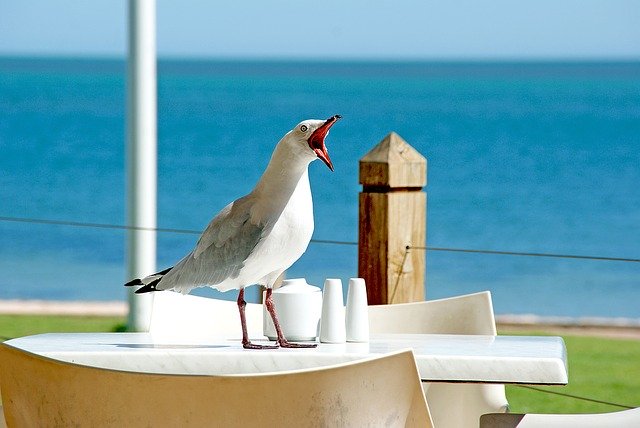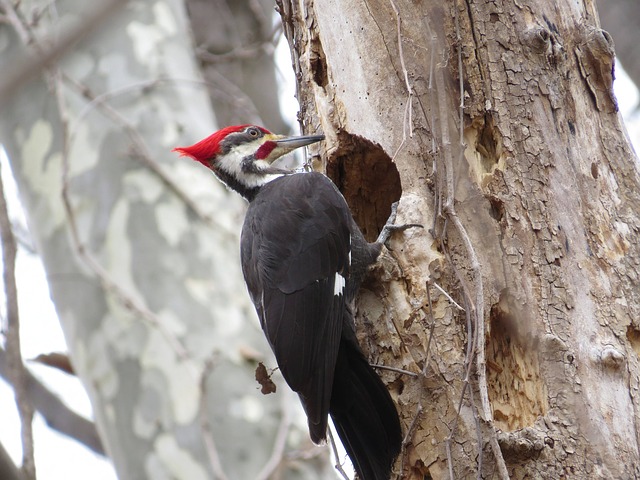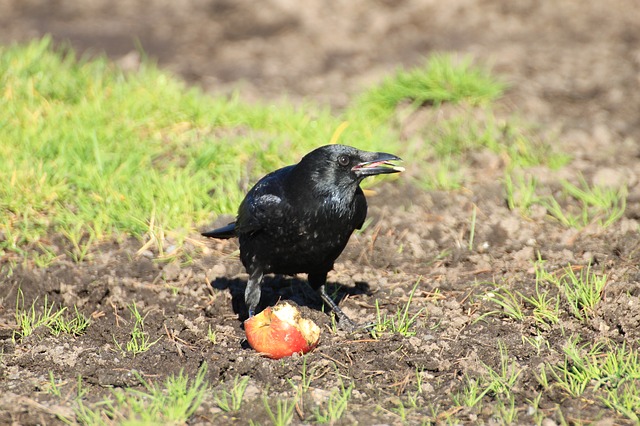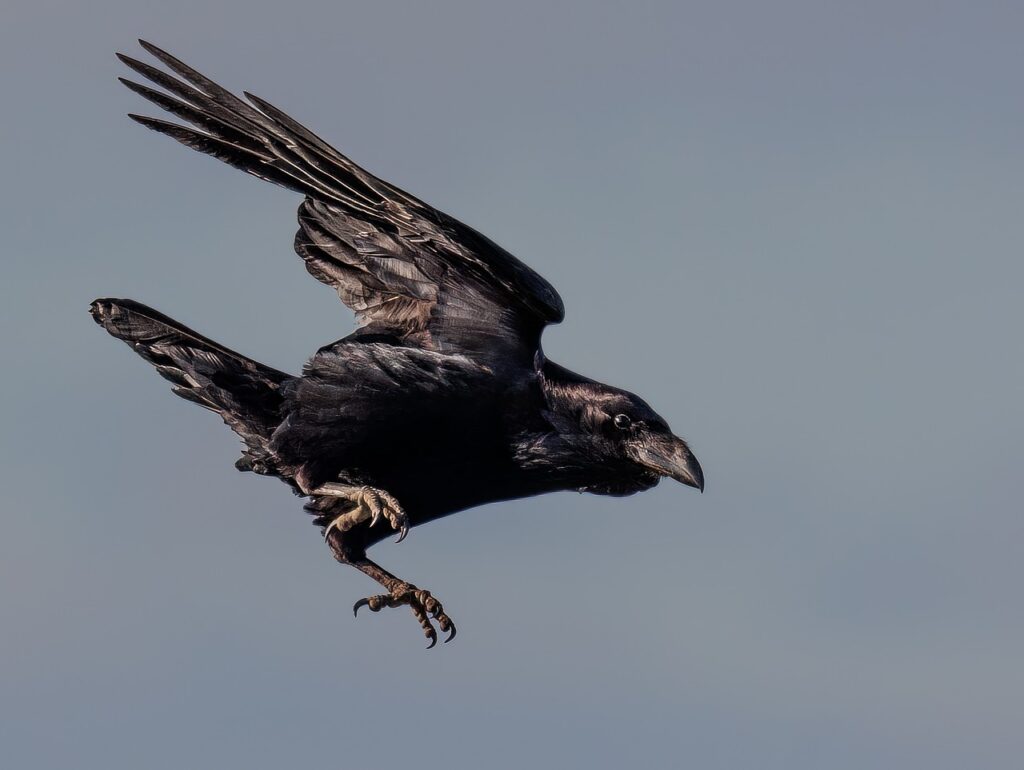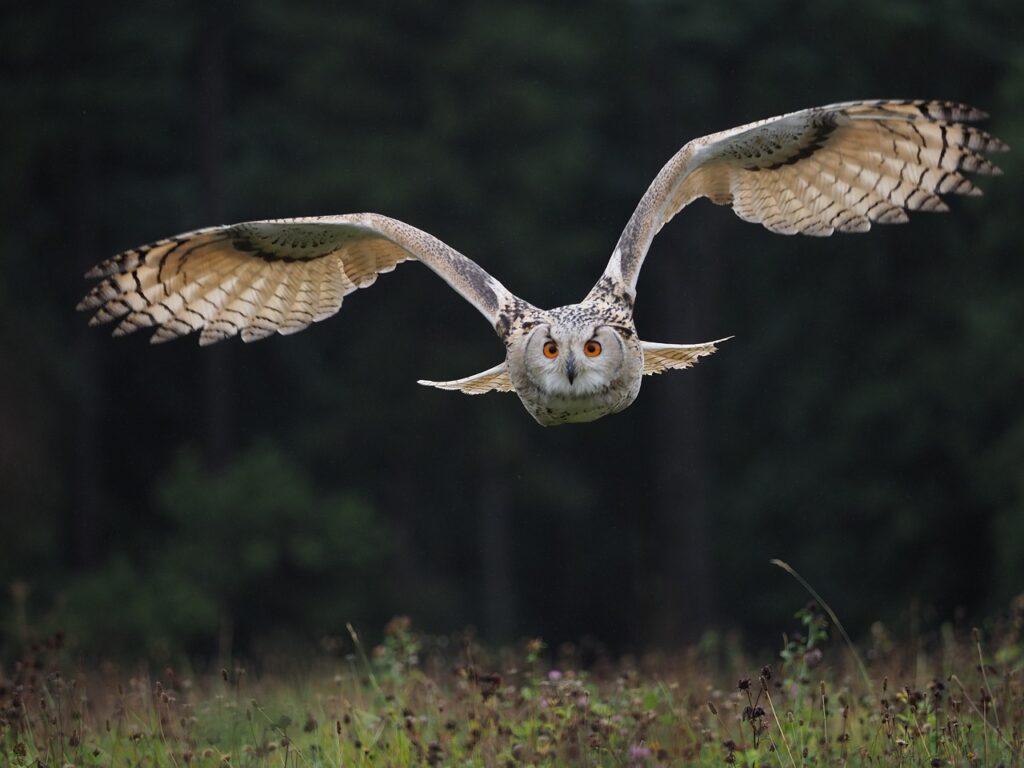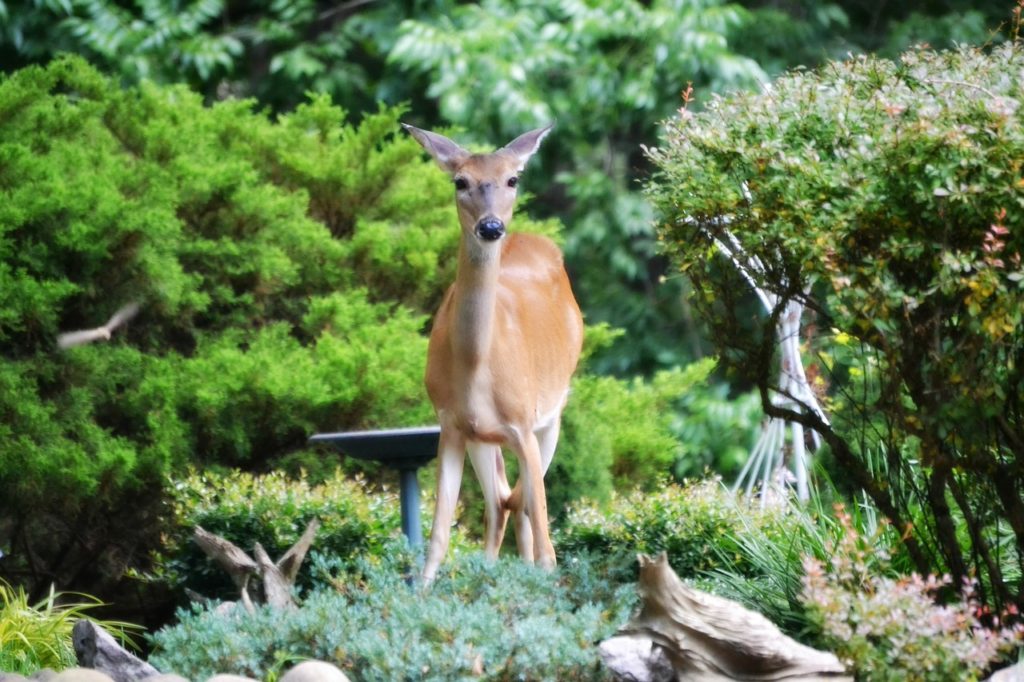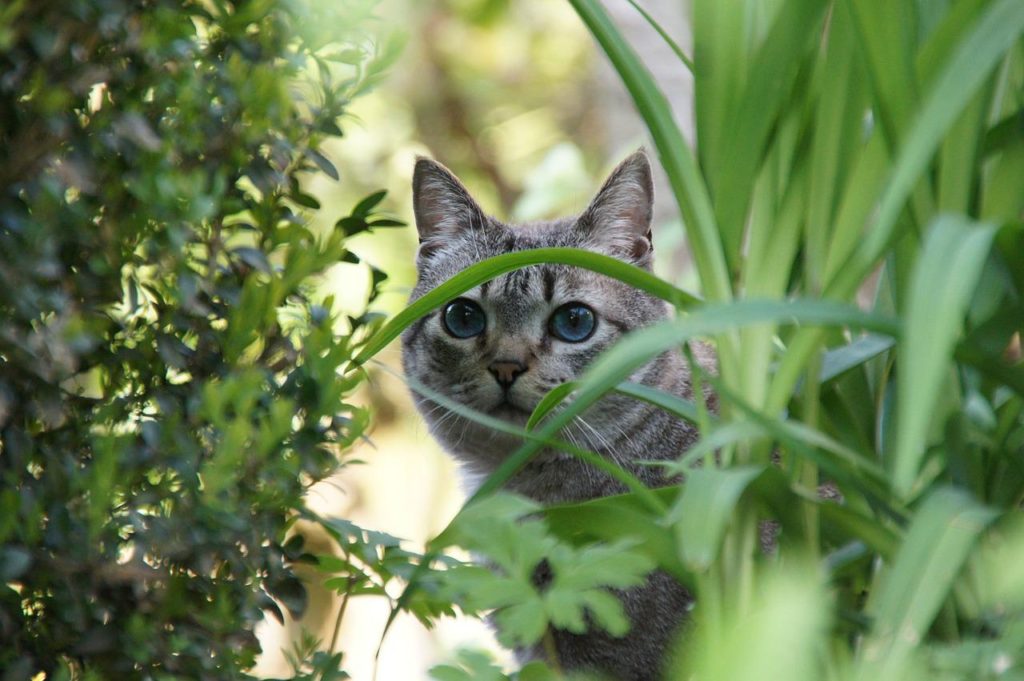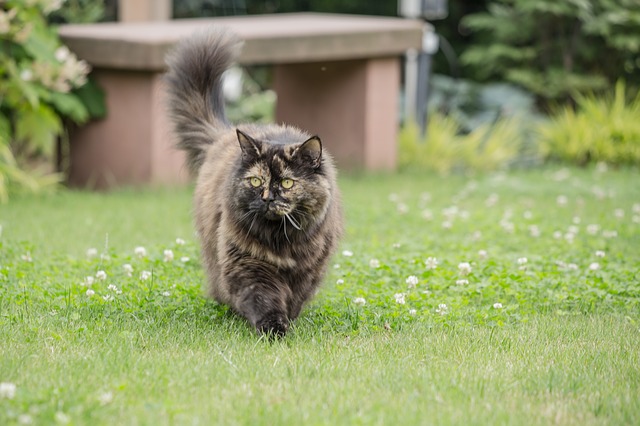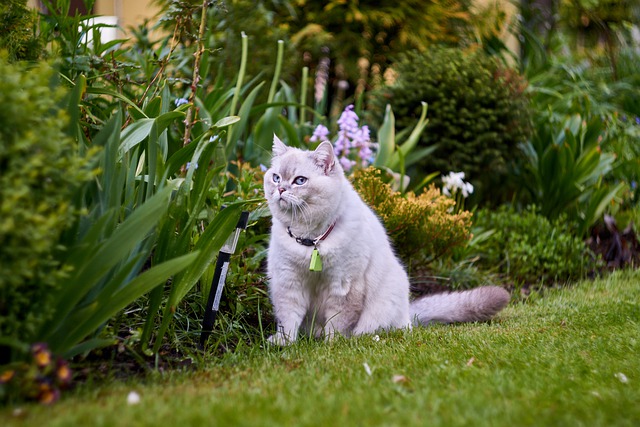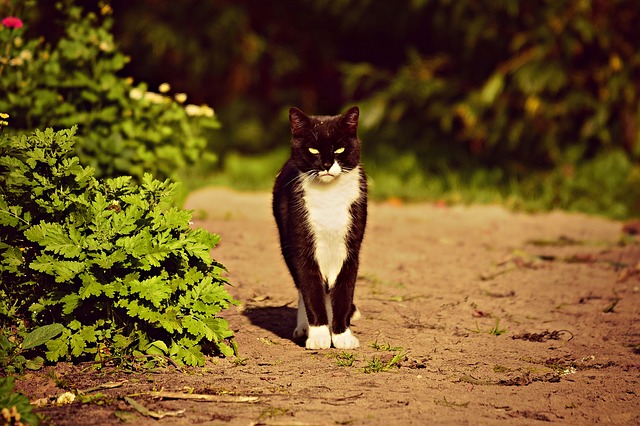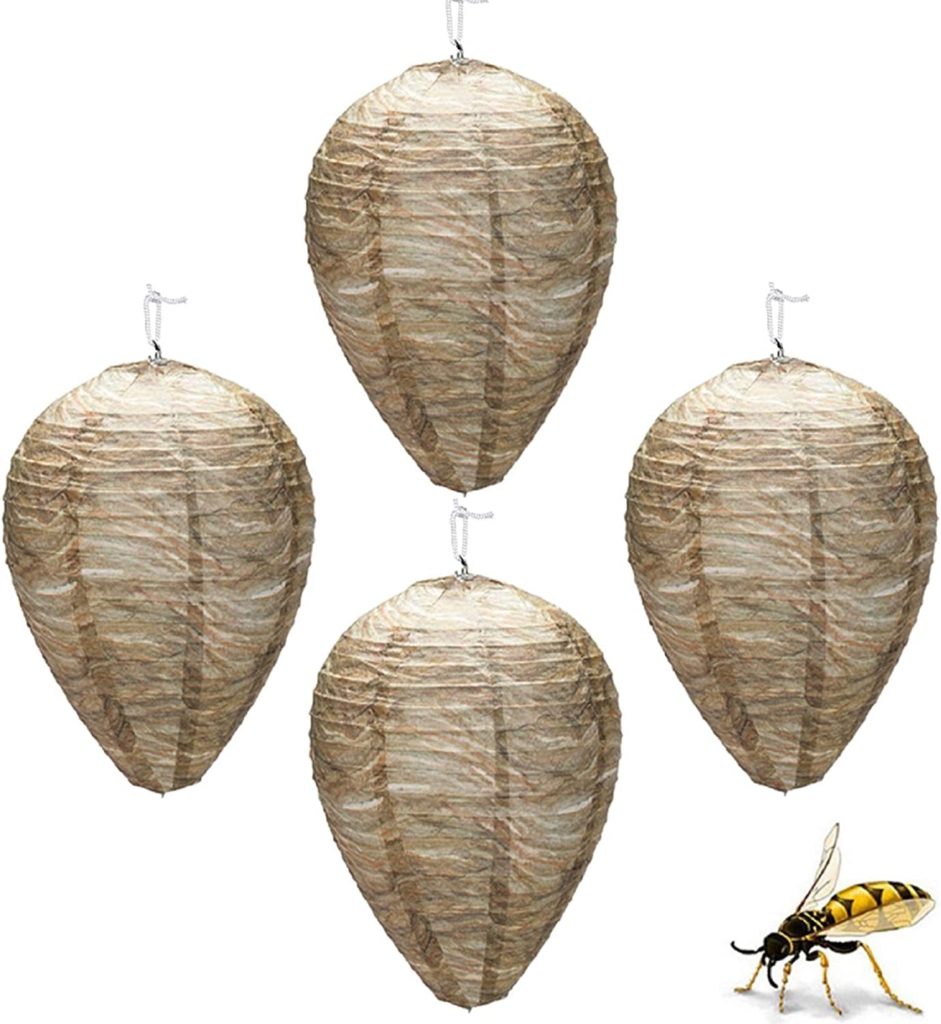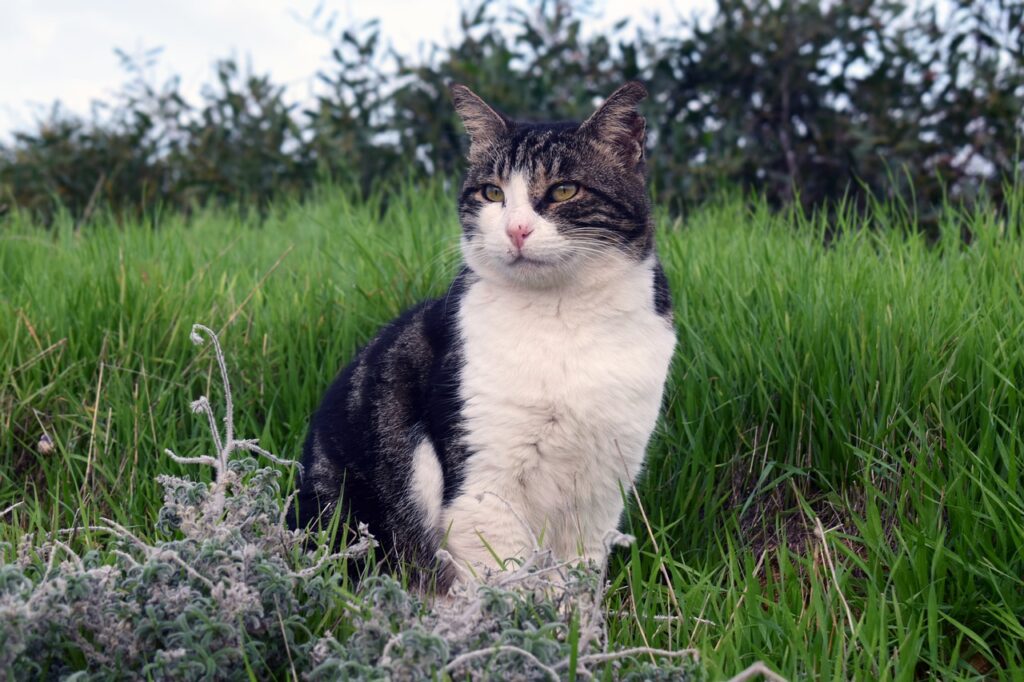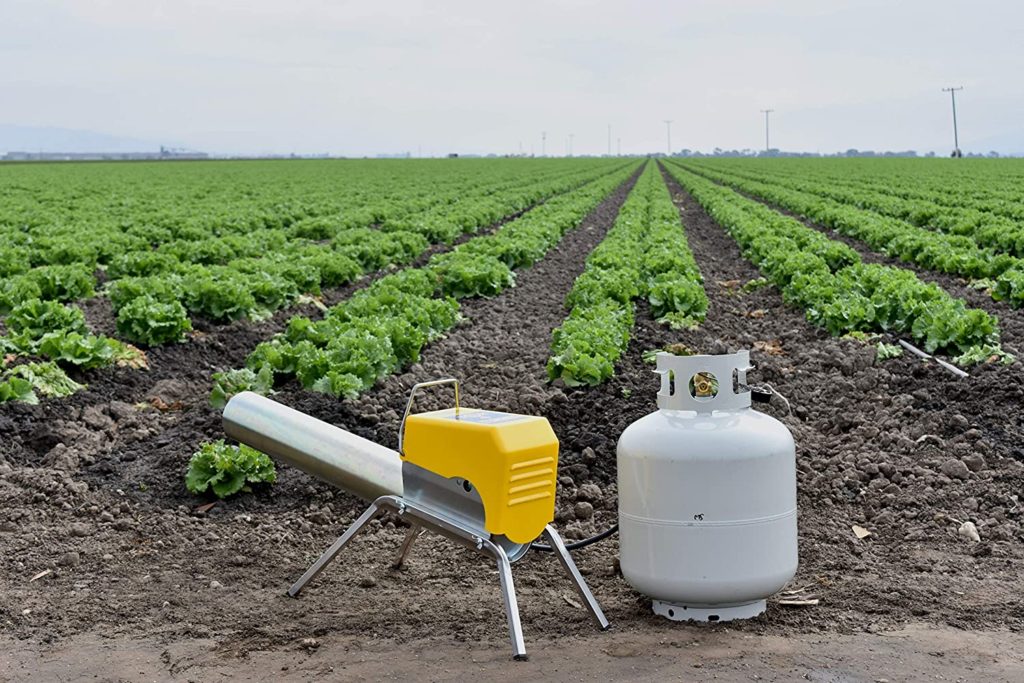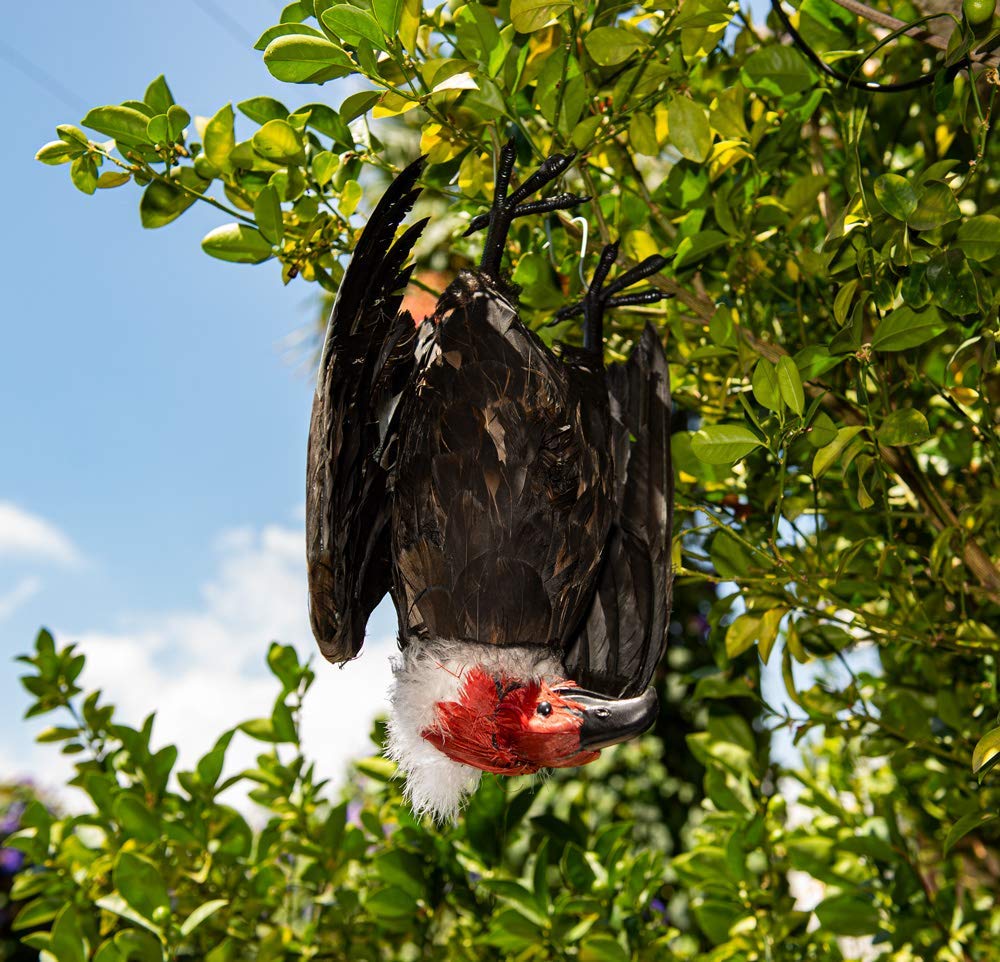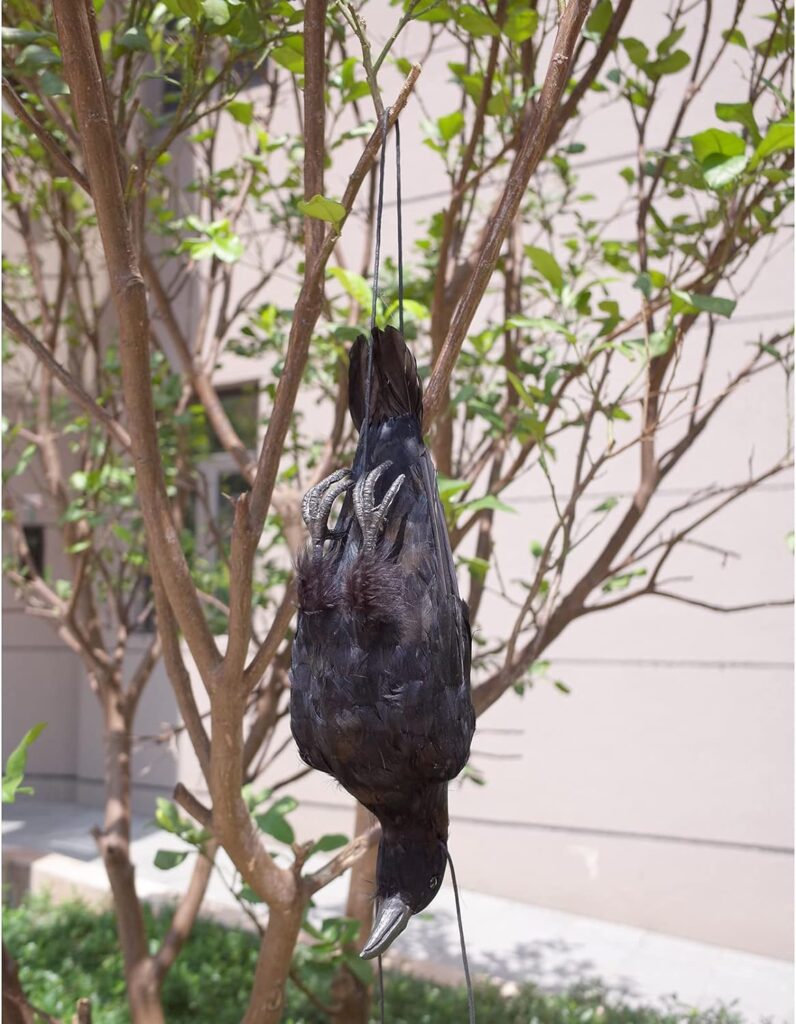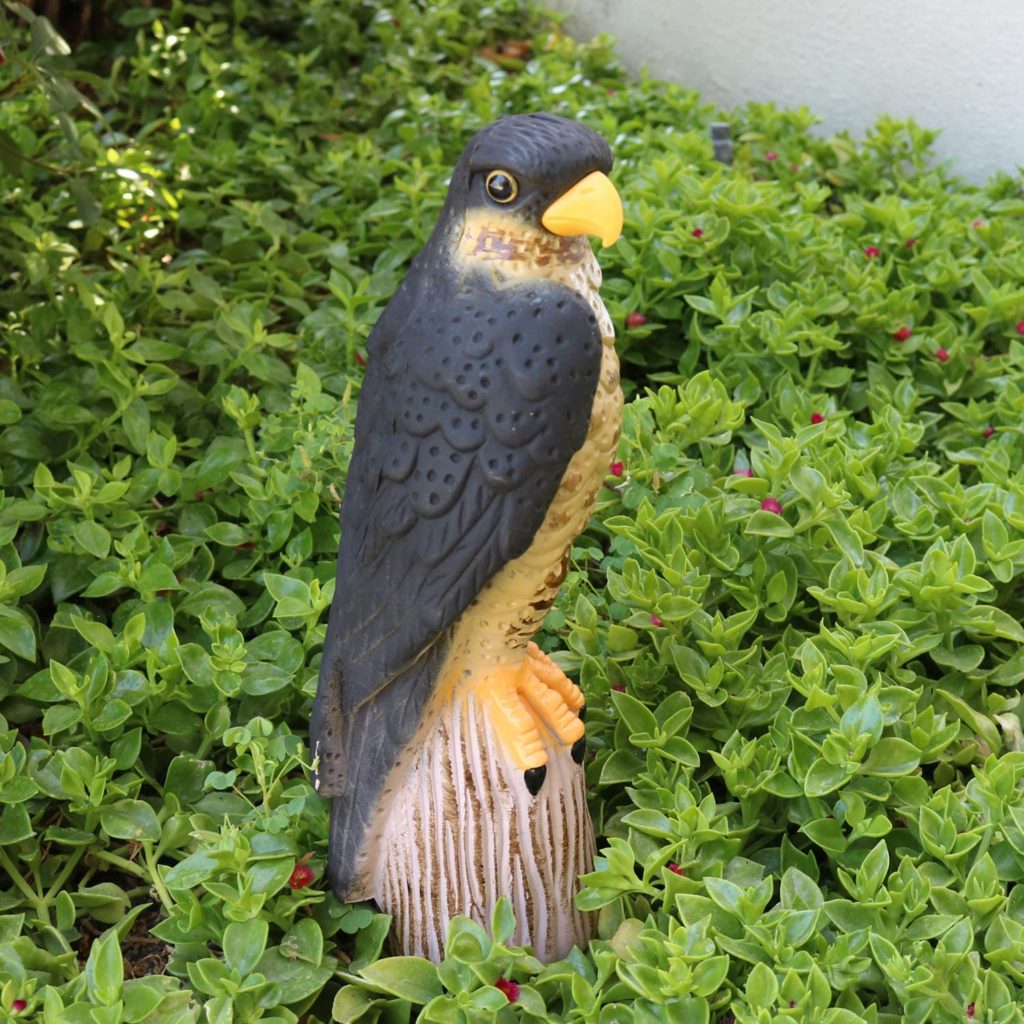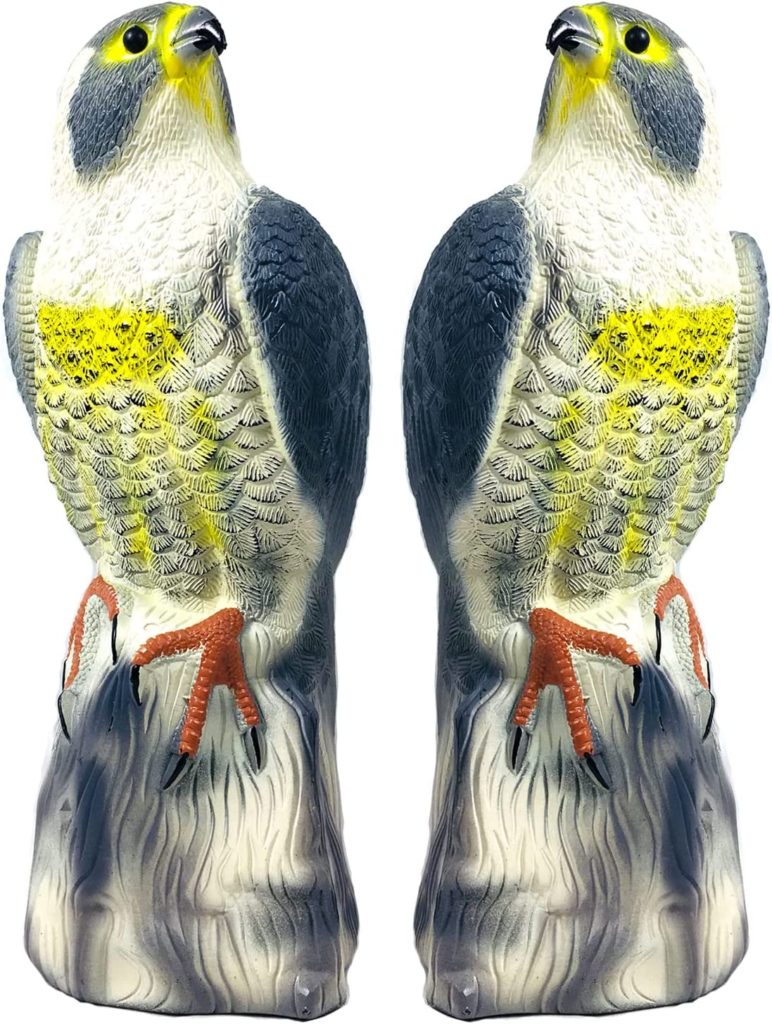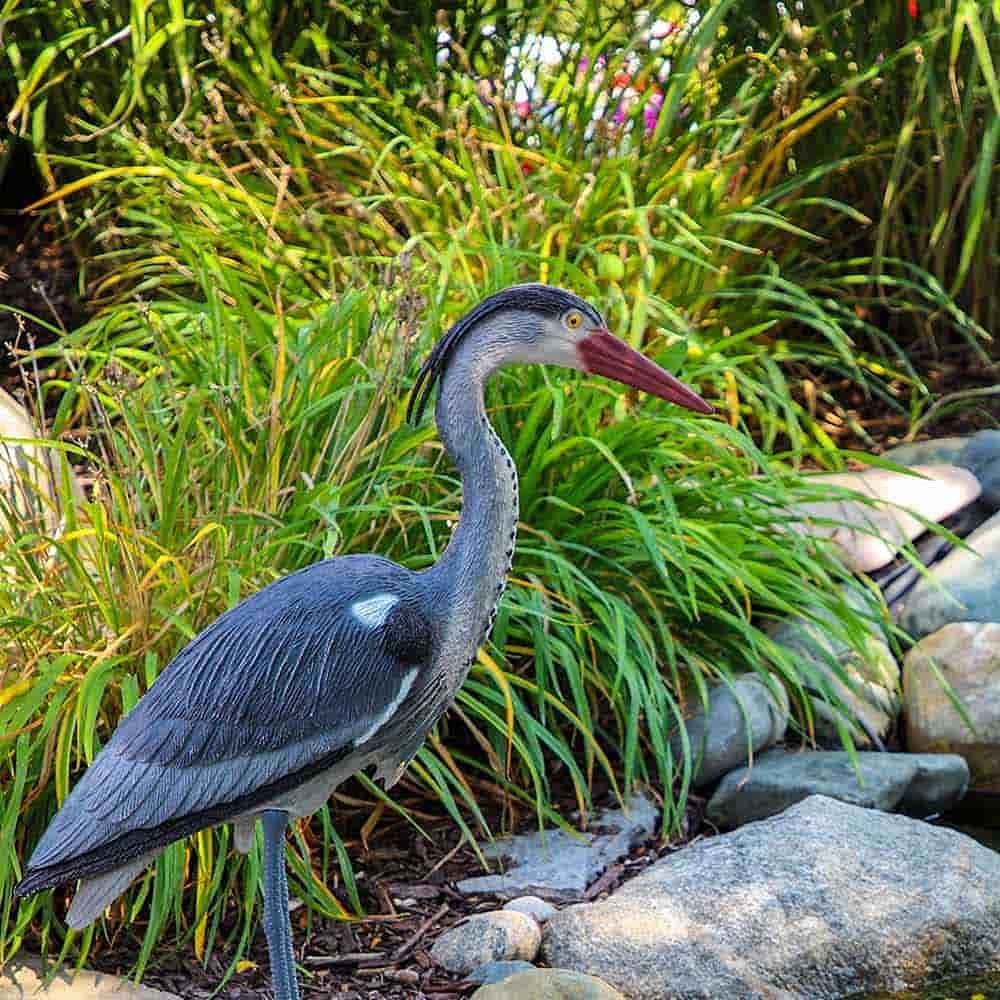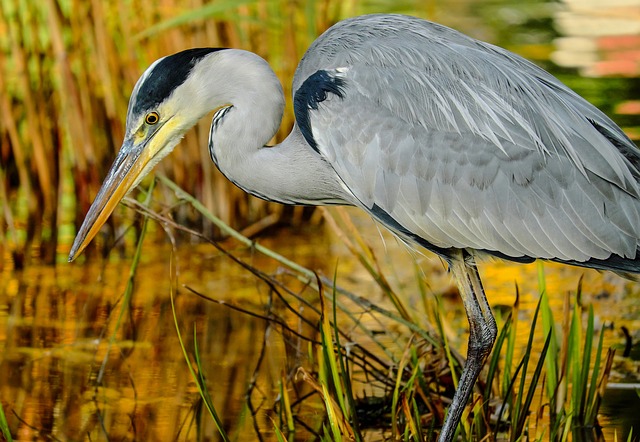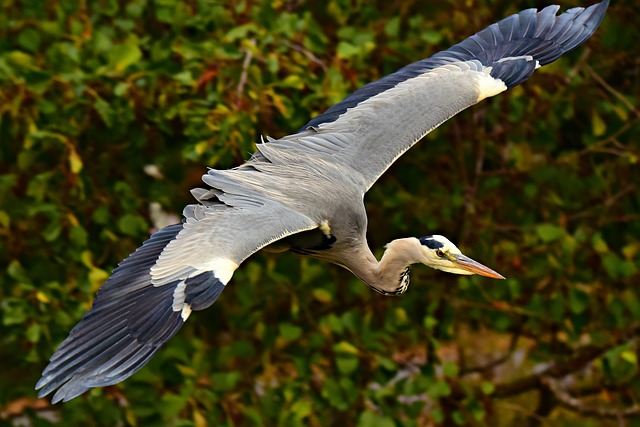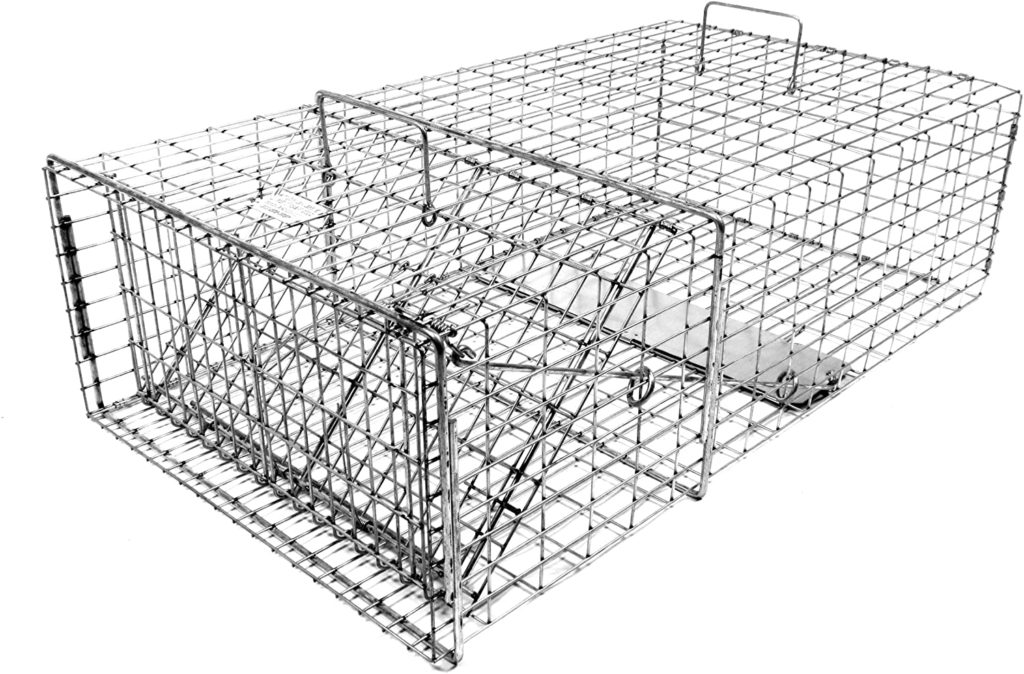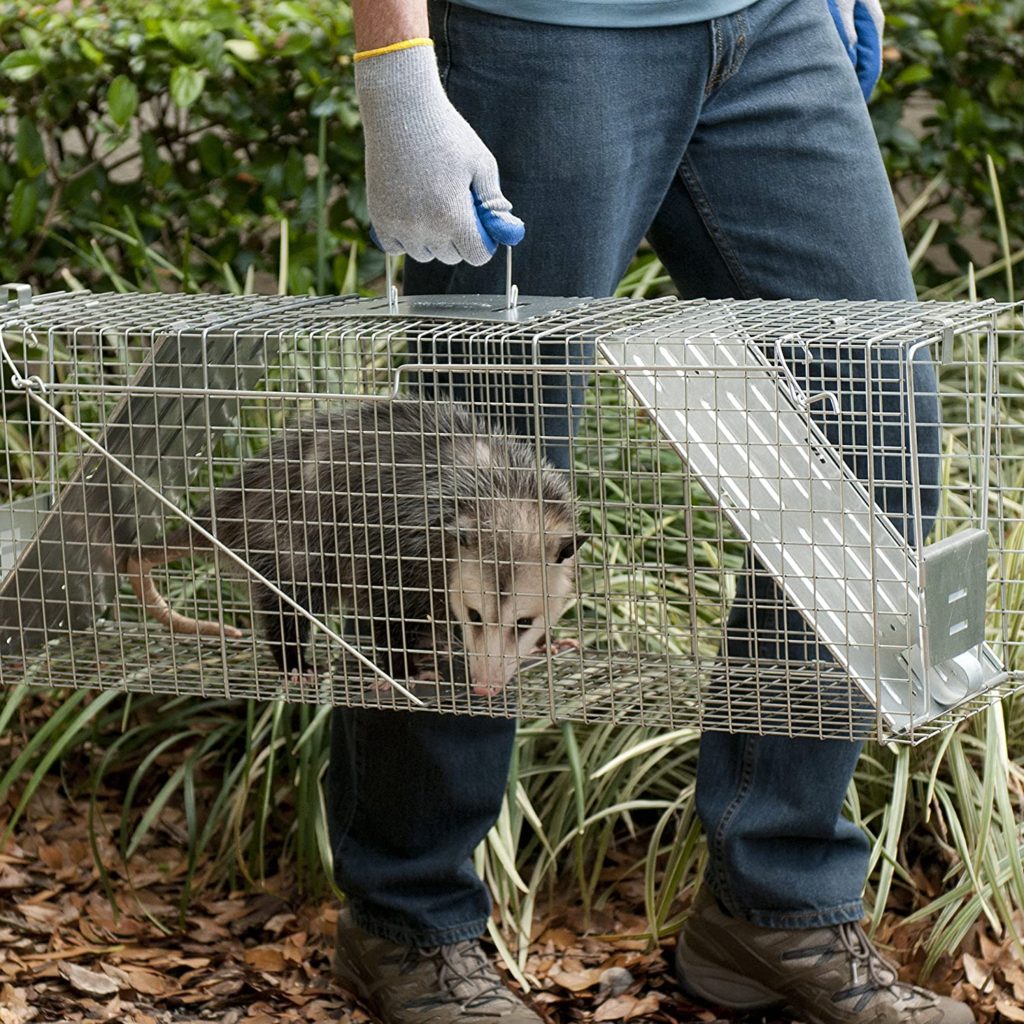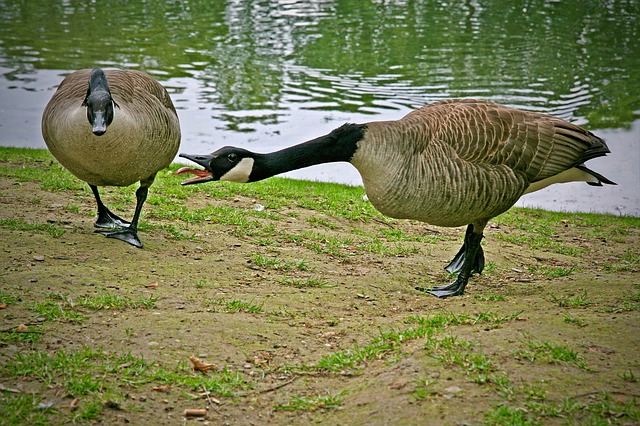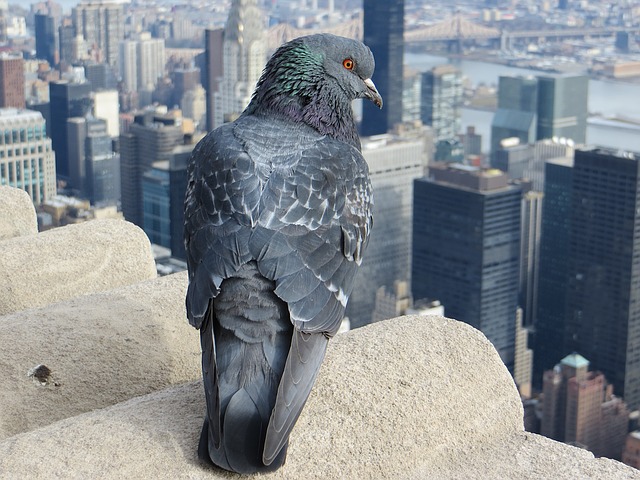
Pest birds come in a variety of shapes and sizes. However they all have one thing in common: they can be a real nuisance to us humans in one way or another. The following are the most common types of pest birds you’re likely to encounter.
European Starling
The European starling is considered an invasive species in North America. It travels in enormous flocks which can cause damage and leave behind a lot of waste when feeding. Flocks can clean out entire bird feeders, leave fruit trees bare, and consume large amounts of sprouting crops. Starling roosts are also incredibly noisy and can create a ton of messy droppings.
Feral Pigeon
The feral pigeon is descended from the rock dove, a bird that nested on cliffs. It’s therefore perfectly suited for living on tall buildings. And the fact that cities offer an abundance of food and have few predators means that the pigeon thrives in urban areas.
It is the most common pest bird species in urban areas around the globe. These pests nest on ledges and their droppings cause an unsightly and potentially dangerous mess. Pigeons are known to carry a variety of diseases that are transmittable to humans.
Canada Goose
The Canada goose is a large species of waterfowl. It often lands in grassy spaces, locations near bodies of water, and in backyard ponds and water features. Each of these big birds can create a lot of waste and they can quickly foul up water making a disgusting mess. In addition, the Canada goose can also be aggressive.
Mallard
The mallard is easily one of the most recognizable species of waterfowl. This duck is also a pest that is known for making a mess in grassy areas such as lawns, parks, and golf courses. And it fouls up ponds and pools with its waste. To keep mallards and other waterfowl from landing a fake predator such as a floating alligator decoy is often used.
Turkey Vulture
The turkey vulture is a vulture species with a bald red head. This scary looking bird typically causes issues when it roosts. It roosts in large numbers and because its diet consists of carrion it has highly corrosive waste. This waste can cause quite a smell and do a lot of damage to surfaces and structures below the roost.
Black Vulture
Like the turkey vulture, the black vulture often causes problems when it roosts near homes or on towers of various types. This species not only eats carrion but also newborn livestock such as calves, which can be very costly for farmers. Dead vulture decoys are often used as a humane deterrent to keep black vultures and also turkey vultures away.
Seagull
The seagull or gull is a seabird. And there are many species of them. Seagulls are scavengers and can be quite bold when it comes to stealing food. These pest birds are very noisy and also leave a lot of highly acidic droppings. They are a particular nuisance for boat owners since they gather and make a mess on unattended boats, and may also nest on them.
Cormorant
The cormorant is a large sea bird that inhabits coastal areas and has a diet that mainly consists of fish. Cormorants sometimes steal fish from fish farms and often feed in conservation areas that are set aside for raising specific species of fish. Their acidic waste can also kill vegetation and be an expensive problem for homeowners living near the water.
Woodpecker
Many people don’t actually consider the woodpecker to be a pest bird. That is of course until one starts putting holes in the wood siding, eaves, or window frames. Male woodpeckers may also cause a racquet by tapping on metal items such as downspouts in the attempt to attract a mate.
Great Blue Heron
The great blue heron is a tall wading bird. While it may look elegant it is an expert predator that is notorious for eating pond fish. And it can swallow very large fish whole. Because it is a territorial species, a great blue heron decoy can be highly effective for deterring herons from landing and feeding in ponds
Barn Swallow
The barn swallows feeds mainly on insects. While this may sound beneficial it also builds its nests on manmade structures such as under eaves, on walls, under bridges, and on barns. The semi-circular mud nest can cause surface damage where it is built. Nests and the waste which accumulates near them can contain parasites, bacteria, and diseases.
House Sparrow
House sparrows are a very common pest bird species. These small brown and grey birds often like to build their nests in drainage pipes, rafters, exterior shutters, and corrugated metal siding. This causes clogs and can be unsafe because they create a lot of potentially dangerous waste. In addition, house sparrows tend to be noisy.
Crow
Crows are highly intelligent birds, which makes them formidable pests. They empty out birdfeeders, eat crops, and dig up lawns looking for grubs. Crows also roost in large numbers and are noisy at dawn. Because these wary birds avoid areas for long periods of time where they have seen another dead crow, dead crow decoys are often used as deterrents for them.
Common Grackle
The common grackle is well-known for causing costly damage to crops. These pest birds feed in huge flocks and devour large amounts of seeds, berries, birdseed, and grains. They also feed on corn sprouts and ripening corn. The droppings left by a flock of grackles can cause damage to various surfaces and require extensive cleanup.
Start Shopping for Bird Repellents!
What Smells Do Crows Hate?
Crows can be quite a nuisance. And one natural way to deter them is by using scents that they dislike. But what smells do crows hate? Read on to find out! Pest Crows Crows are often considered to be pests. In agricultural areas, they are well-known for causing crop...
How To Get Rid Of Owls In Your Yard
While owls are amazing creatures and can help to function as natural pest control, they are not a bird everyone wants on their property. Fortunately, when it comes to how to get rid of owls in your yard there are quite a few things you can do to deter them. Here’s...
How To Make Irish Spring Deer Repellent
Irish Spring isn't just a soap that has a pleasant and energizing fragrance. It's also an ingredient that can help keep your outdoor space healthy and inviting. By making your own Irish Spring deer repellent you can help keep nuisance deer at bay. Here's what you'll...
The Best Cat Deterrent Plants
Cats are adorable and beloved creatures. That doesn't mean, however, that they belong in your garden. The last thing you want is to see felines eating your favorite plants, or using your garden as their personal toilet. So here are some of the best cat deterrent...
Do Coffee Grounds Deter Cats?
You may find your garden and yard smelling awful because the neighborhood cats have decided to treat the area as their giant litter box. Not only can it really stink but it’s unsanitary too. Cats may also be tearing up plants and digging out seeds and bulbs. You may...
Will Coffee Grounds Keep Cats Away?
If you find that the neighborhood cats are treating your garden and yard like a personal litter box, it is time to use coffee grounds to keep cats away. You may wonder, "Will coffee grounds keep cats away?" The answer is yes, they will. This is not a myth or an old...
Cats And Coffee Grounds
For most of us, our first cup of coffee in the day is like a drink of ambrosia. Not only does it smell and taste delicious but it has many other advantages. Cats and coffee grounds do not go together. And this is great if you are having trouble with cats littering up...
Everything You Need To Know About Fake Wasp Nests
Buy on Amazon Wasps are aggressive pests that have a painful and potentially dangerous sting. Luckily you don’t have to risk serious injury in order to keep them away. A much easier option is to use a fake wasp nest to deter them. And here is everything you’ll need to...
How To Use Orange Peels To Deter Cats
Are you tired of neighborhood cats wreaking havoc in your garden or yard? What if we told you that there is a simple, natural, and effective solution to repel them? Enter the humble orange peel to deter cats, a surprisingly powerful DIY cat repellent that has been...
The Complete Guide To Bird Cannons
Buy on Amazon Birds and other pests can be a huge nuisance for farmers, businesses, and homeowners in rural areas. They can cause an incredible amount of damage, a loss of income, and also be a major safety concern. A bird cannon is a cost-effective and highly...
Dead Vulture Decoys: The Beginner’s Guide
Buy on Amazon Vultures in flight can look elegant as they soar high above. However, these large birds can be a big problem once they’ve decided to land on your property. A dead vulture decoy is one of the most efficient tools for deterring these pests. And here...
The Total Guide To Dead Crow Decoys
Buy on Amazon Whether you live in the country, suburbs, or even the city, dealing with pest crows can be a significant problem. One of the most effective methods for controlling these nuisance birds is using a dead crow decoy. This all-in-one guide will cover...
Falcon Decoys: Everything You Need To Know
Buy on Amazon Dealing with the damage and mess caused by pest birds is never fun. However, you actually don’t need to spend much time or money in order to get rid of birds and other pest species. With the help of a falcon decoy, you can take advantage of their natural...
All About Hawk Decoys
Buy on Amazon Pest birds can make a huge mess and cause a lot of expensive damage. To help keep birds and other pests away, a hawk decoy is an effective and safe solution. So here is your complete guide to them. Why A Hawk Decoy? Hawks are one of the most widespread...
The Complete Great Blue Heron Decoy Guide
Buy on Amazon A hungry heron can easily make a meal out of expensive pond fish. One of the most effective methods for protecting your pond from these smart birds is with a great blue heron decoy. Here is your complete guide to them, with all the info and tips you’ll...
How To Keep Blue Herons Out Of Your Pond
Great blue herons are one of the biggest problems that pond owners face. These birds are not only smart but can easily catch and swallow large numbers of surprisingly big pond fish. Therefore you’ll need to know how to keep blue herons out of your pond in order to...
How To Deter Herons From Your Pond
Herons are designed by Mother Nature to hunt fish. And unfortunately for pond owners, they often find pond fish to be an easy meal. So in order to protect your fish, you will want to know how to deter herons from your pond. Alligator Decoys Alligators are natural...
How To Get Rid Of Snapping Turtles In The Pond
Buy on Amazon While there are some turtle species that can live peacefully in backyard ponds snapping turtles are typically not one of them. Not only are they carnivorous but also potentially dangerous. However before you try and catch one, you’ll want to know how to...
Live Animal Cage Trap Tips For Success
Buy on Amazon Pests can be a major hassle; they can cause costly damage, make a mess, and can even spread disease. Many homeowners choose to trap pests on their own using what are known as live animal cage traps. These traps are totally humane and allow you to safely...
Common Pond Pests And How To Deal With Them
While there are many benefits to owning a pond, one of the drawbacks is dealing with pests. And whether big or small they can definitely be a nuisance. Here are some of the most common pond pests you’re likely to encounter along with the basics on how to deal with...
